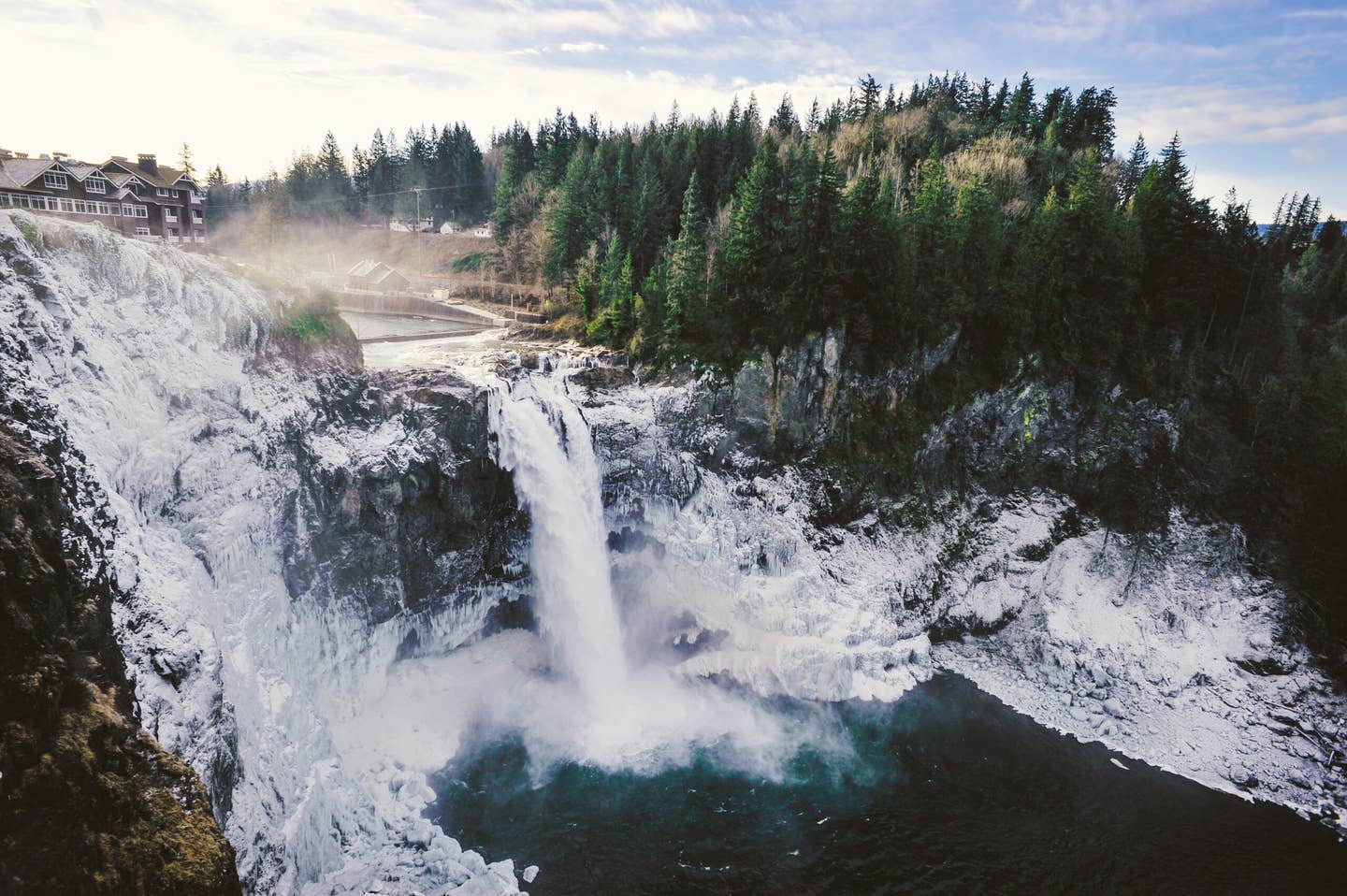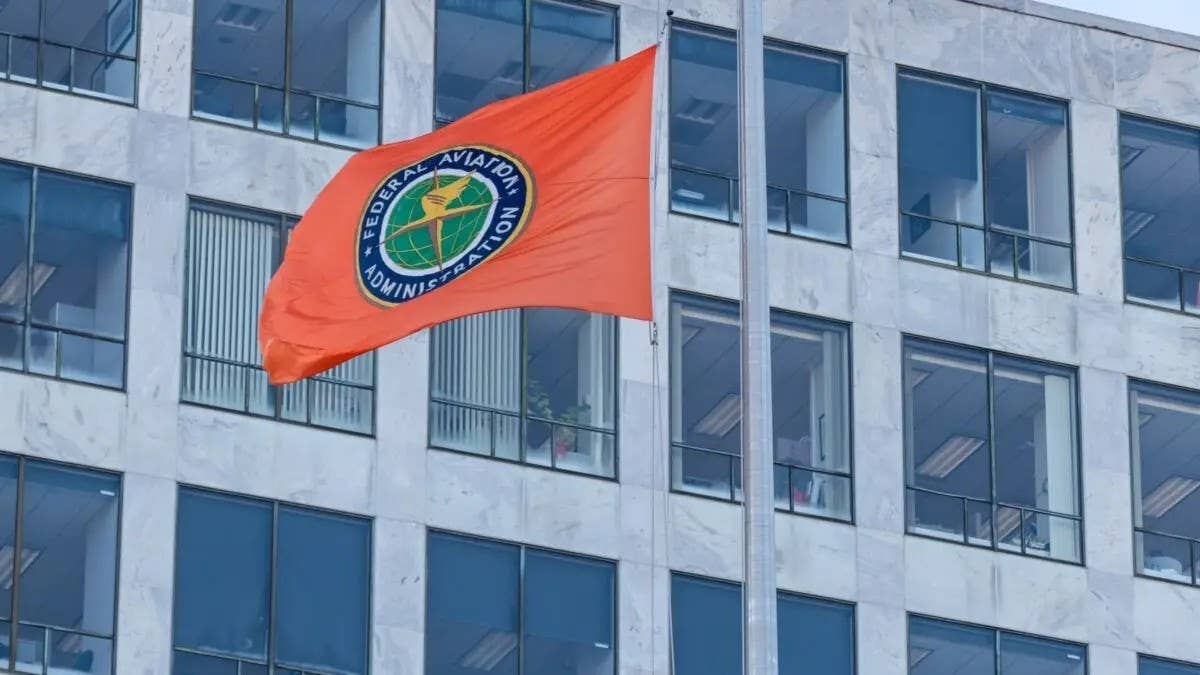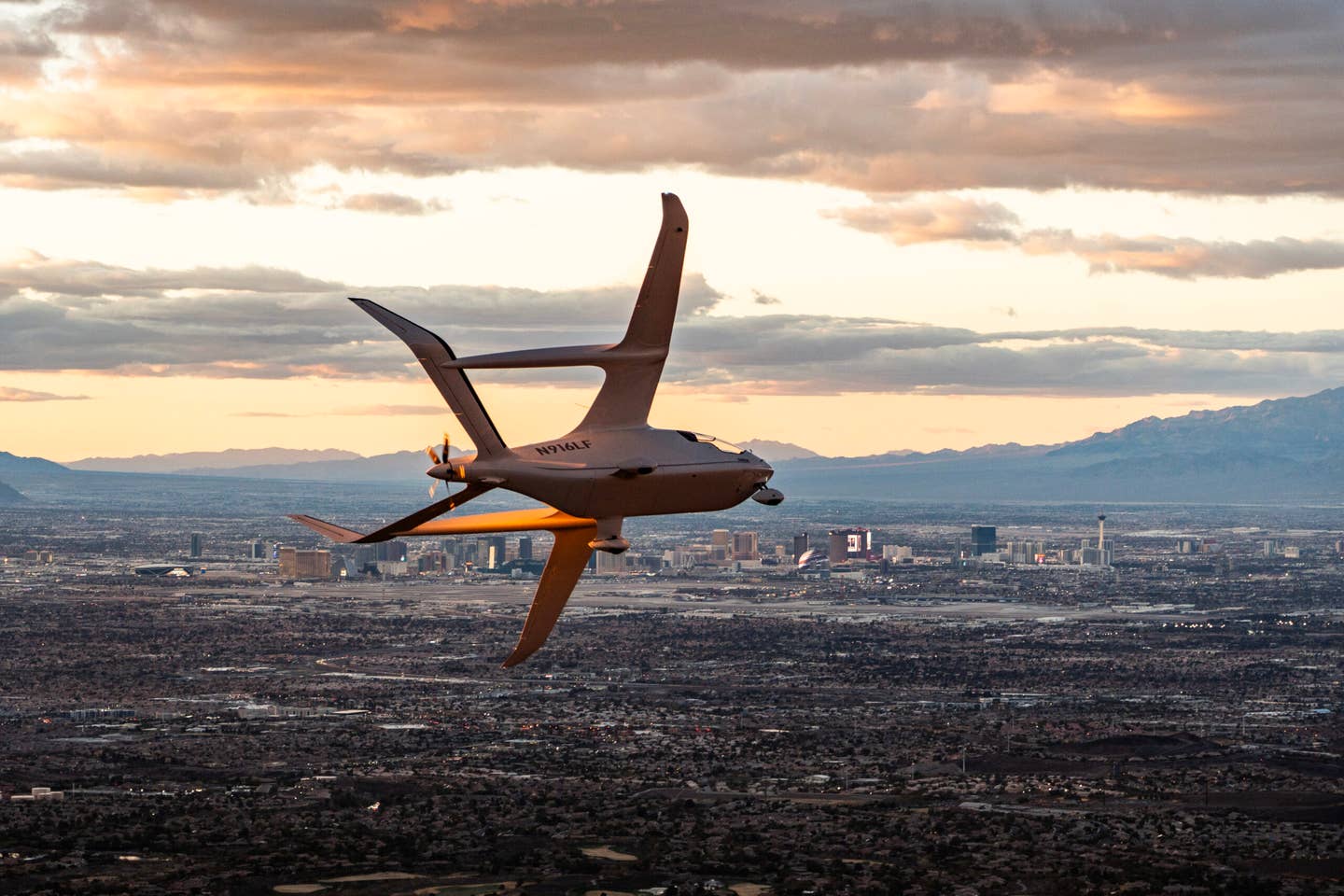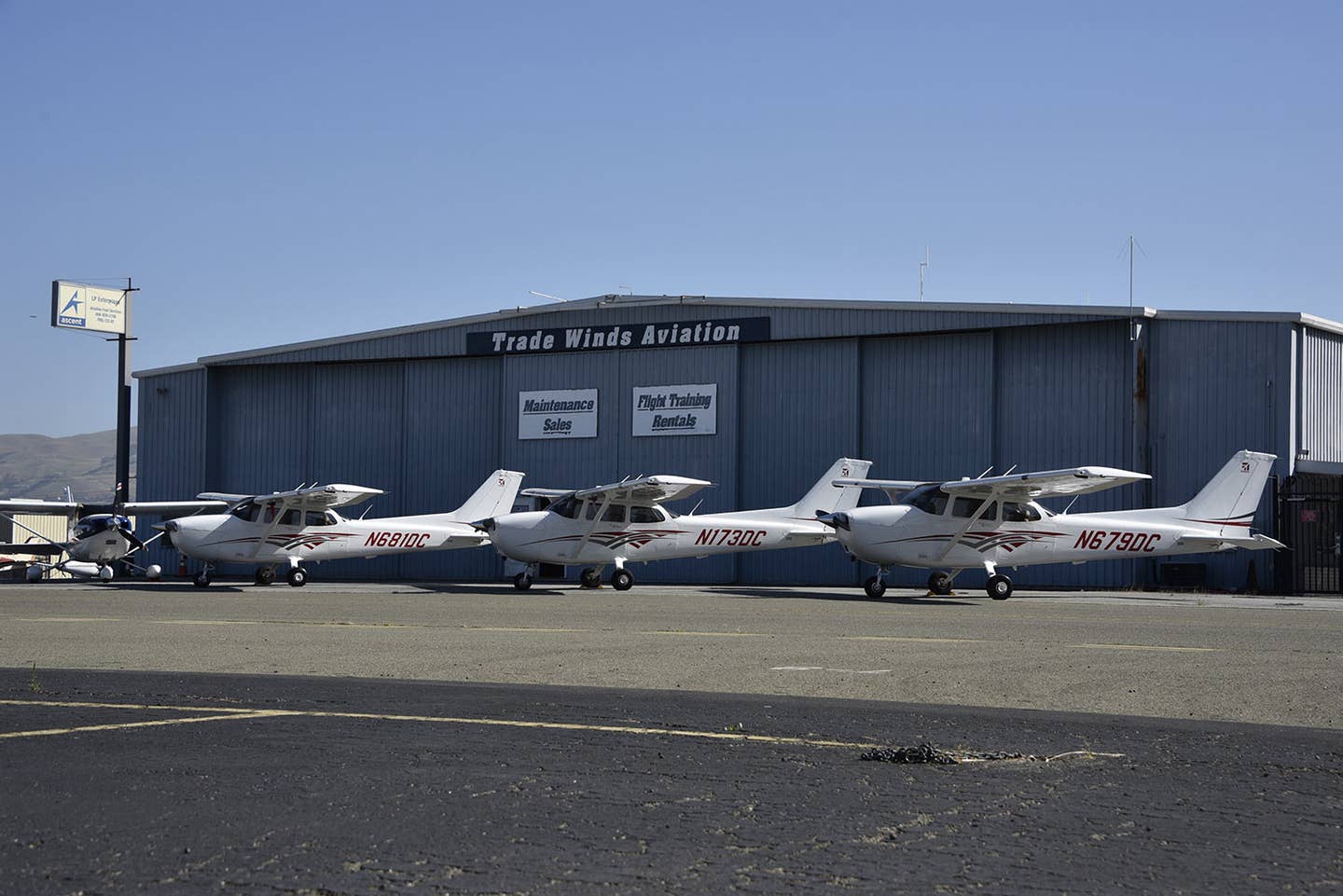Pilots Asked to Limit Flights Over Waterfall in Washington State
A Washington State Native American Tribe is asking pilots to avoid Snoqualmie Falls.

Snoqualmie Falls is 28 miles southeast of Seattle. [File Photo: Adobestock]
Are the Snoqualmie Falls scenic or sacred? That depends on who you ask.
The falls, located approximately 28 miles southeast of Seattle, Washington, are considered to be one of the most gorgeous natural wonders in the Evergreen State. They stand 268 feet tall and are very popular for aerial tours.
The falls are on land belonging to the Snoqualmie Tribe and are a place of great spiritual reverence. As such, the tribe is asking pilots to avoid repeated low flights over the area.
"The falls are our place of creation. It is where we go to gather, to connect in ceremony and prayer," says Jaime Martin, executive director of governmental affairs and special projects for the Snoqualmie Tribe, and a Snoqualmie tribal member. "It is where we go to connect to our ancestors. Snoqualmie Falls is listed as a Traditional Cultural Property in the National Register, and these low-flying aircraft have an adverse impact as the noise they generate disrupts our prayers and ability to connect at our sacred place."
Martin says the ceremonies are private to tribal members, therefore, low-flying aircraft—which Martin describes as a combination of drones, helicopters, and airplanes—are intrusive.
In 2019 the Tribe purchased the Salish Lodge & Spa and adjacent acreage at Snoqualmie Falls for $125 million in order to stop a development that was slated to be built there. The Snoqualmie Falls area is popular with outdoor enthusiasts and sees approximately 1.5 million visitors a year as a premier sightseeing, hiking, and wedding destination.
Not all aircraft that fly over the falls are there for sightseeing.
Popular Route for Aircraft
The Seattle VFR sectional says the falls lay along a popular east-to-west route over the mountains. It is not uncommon for aircraft, especially airplanes, to orbit over the valley near the Falls to gain altitude before they head east over the mountains, or to orbit to lose altitude when they come west to avoid encroaching on Seattle's Class B airspace.
Martin claims the tribe, with the help of the FAA, has learned that most of the air traffic isn't passing through the area, but rather are the tours that orbit, often at low altitude.
"Air traffic, especially that of helicopters over the falls, has increased noticeably in recent years," says Martin. The tribe reached out to helicopter operators who conduct aerial tours asking them to cease their tour operations. "None of them replied to us, except for one operator who basically told the Tribe they had no interest in communicating with us."
Martin notes that one of the operators was using "culturally sensitive information" to market the tours. “An additional letter was sent asking them to cease and desist using the information," she says.
The tribe also has safety concerns about low-flying aircraft.
“The FAA is aware of the concerns and is working with all parties to consider available options.”
FAA statement on the matter
"A few weeks ago, one of our tribal members, who is a licensed drone operator, went to the Falls and witnessed a drone almost collide with a helicopter giving a tour at the falls," Martin explains.
Although federal aviation regulations contain those covering minimum safe altitudes and required distance from persons and property, Rob Roy Smith, general counsel for the Snoqualmie Tribe says no such rule exists for the falls.
"Currently, there is no minimum altitude for commercial air tours over the falls. That needs to change. The Biden Administration has prioritized protecting Native American Sacred sites through a Memorandum of Understanding Regarding Interagency Coordination and Collaboration for the Protection of Indigenous Sacred Sites. The Department of Transportation co-signed this MOU and the Tribe has made clear to the FAA, as part of the Department of Transportation, they should use all the options they have available to protect the cultural sensitivity of the Falls, which can and should include altitude restrictions.
“The Tribe continues to work with the FAA on what actions they can take to protect the Falls and all those who enjoy it from low flying aircraft.”
The Tribe is encouraging its members to report low-flying aircraft to the FAA.
On this day, two years ago, the Snoqualmie Tribe publicly announced it had acquired the Salish Lodge and adjacent...
Posted by Snoqualmie Tribe Ancestral Lands Movement on Monday, November 1, 2021
The Search for a Solution
When contacted by FLYING, the FAA issued the statement: "The FAA is aware of the concerns and is working with all parties to consider available options."
At least one of the helicopter tour operators has responded to the tribe's concerns. Sara Andersen, general manager of Atomic Helicopters, declined to be interviewed by FLYING but stated in an email, "As a small business that is locally owned and operated in the Seattle area, our top priorities are safety and respecting our community. Out of respect for the Snoqualmie tribe, Atomic Helicopters has halted all operations around Snoqualmie Falls."
Martin explains that when the tribe tried to reach out to pilots on social media and online publications in hopes of educating them, "the comments left by pilots were very combative and hostile."
"Facebook is the wrong place for that kind of outreach," says Long Bach Nguyen, chief pilot of Washington State Search and Rescue. "Facebook breeds hostility. Many pilots aren't even aware that the tribe bought that land, and that it is now sovereign airspace."
Nguyen suggests the tribe reach out to the Aircraft Owners and Pilots Association (AOPA) or the Flights Above the Pacific Northwest group to arrange such a meeting.
“"The restrictions the tribe seeks are to preserve the sacredness of the falls and provide for the safety of all visitors." ”
Rob Roy Smith, general counsel for the Snoqualmie Tribe
"An in-person outreach with pilots would be more cordial and not as confrontational as Facebook or other social media is. We could express our concerns and listen to theirs and come up with solutions."
The big question, says Nguyen, is who will control the airspace over the falls?
"Will it be the FAA or the tribe?" he asks, suggesting that the tribe ask for a notation to be placed on FAA publications that request pilots to avoid flying below a certain altitude.
Nguyen says, many pilots may not be aware that the falls are culturally sensitive.
"The tribe could do a better job reaching out and explaining their reasoning, simply asking the pilots not to fly below 1,000 feet and to limit their circling due to cultural sensitivity."
He's against the idea of putting the airspace off limits because of its use as a corridor of passage over the mountains.
"I'm a search-and-rescue pilot, and I don't want to have to go look for anyone who was trying to avoid their restricted airspace and ended up CFIT [controlled flight into terrain] because of the weather," he says.
The tribe does not want to make the falls off limits, stresses Smith.
"The tribe has long held that the Falls are for all people for all time,” he says. “The restrictions the tribe seeks are to preserve the sacredness of the falls and provide for the safety of all visitors.
“The tribe is asking the FAA to implement appropriate flight restrictions that will limit commercial helicopter tours from the airspace directly over and adjacent to Snoqualmie Falls to help preserve the sacredness of Snoqualmie Falls. Such restrictions could include no-fly periods such as during a tribal ceremony at the falls or limitations on acceptable levels of air tours, including frequency, duration, altitude, and routes."

Sign-up for newsletters & special offers!
Get the latest FLYING stories & special offers delivered directly to your inbox






